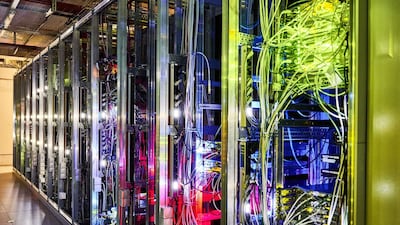Investment in infrastructure is essential to modernise economies. It is estimated the world will have to spend $3.7 trillion every year through to 2035 on infrastructure.
This includes the expected cost for all types of infrastructure needed, from roads to newer types of infrastructure such as sustainable electricity, fibre optics and data centres that are now critical to the economic development of every country.
Additionally, in response to the Covid-19 pandemic's effect on their nation's economies, governments globally have increased investment in infrastructure by allocating a sizeable portion of their record $10tn-plus stimulus response to this sector.
Moreover, additional stimulus allocations are expected to be assigned towards infrastructure during the economic recovery period.
The Middle East has placed significant emphasis on infrastructure investment as well, with digital innovation and technology driving change in the sector's development.
Developing a digital and sustainable infrastructure is also a part of countries' economic strategies, such as the UAE's Vision 2021 and Saudi Arabia's Vision 2030.
The value proposition for investing in infrastructure assets is increasingly compelling.
Such investment has the potential for relatively high yields, as private infrastructure assets have offered a yield of about 7.2 per cent.
Furthermore, this type of investment can also provide better returns than other asset classes, with an expected return of 6.1 per cent and annual volatility of 10.8 per cent over a 10-year to 15-year investment horizon.
Thus, infrastructure investment presents significant opportunities for private investors.
Driven by the rising population, urbanisation, digitisation and the sustainable focus of modern economies, this market requires an annual investment of about $4tn.
Infrastructure is a fairly broad asset class and it is the newer infrastructure, in particular, that offers some of the most exciting investing potential.
A digital future
The global "datasphere" is on track to quadruple during the next five years, urging companies and consumers to store, retrieve and transfer all of their data efficiently.
This mega-trend is expected to bring about a "fibre decade" as it steers a significant rise in the use of fibre-optic cables in our connectivity networks.
At present, about 55 per cent of enterprises are connected by fibre-optic cables. However, as companies are increasingly adopting artificial intelligence and machine learning, collecting and analysing larger data sets, they require additional processing power and faster connectivity.
The global fibre-optic market was valued at about $4 billion in 2019 and is now set to grow to $7bn by 2024. Additionally, spending on global data centres is projected to reach $200bn this year, up from an estimated $188bn in 2020.
In the Middle East, spending on data centre systems is expected to increase by 6.8 per cent in 2021 and by an additional 2.8 per cent in 2022, according to a forecast by Gartner.
Moreover, many telecoms companies are investing in fibre assets to deliver 5G connectivity more widely.
Currently covering only 5 per cent of the global population, 5G connectivity is expected to rise to between 55 per cent and 65 per cent by 2023.
Making networks greener
In the last five years, the number of large data centres worldwide has doubled to 550. These use up more than 2 per cent of the world's electricity and emit as much carbon dioxide as the airline industry.
Electricity and transport are a couple of major contributors to greenhouse gas emissions, accounting for 26.9 per cent and 28.2 per cent of emissions, respectively.
Therefore, governments around the world are emphasising the "decarbonisation" of the transport and electricity sectors.
This means that investment in the power sector should likely be angled towards renewable energy such as wind and solar energy.
In the next five years, $1.6tn will be invested towards expanding wind and solar electricity generation capacity globally.
Renewable energy use is also gaining ground in the Middle East. Countries are increasingly working towards expanding renewable energy capacities.
For example, Saudi Arabia plans to reach 40 gigawatts of solar photovoltaic, 16 gigawatts of wind and 2.7 gigawatts of concentrated solar power capacity by 2030.
Additionally, the UAE's Energy Plan 2050 has set a goal of 44 per cent renewable energy use, largely relying on solar power.
Smarter movements
Technological advancements in passenger mobility, freight transport, logistics automation and clean energy will significantly transform the transport and shipping industries.
On the horizon are self-driving cars and cargo ships that dock themselves at ports where unmanned cranes unload containers on to self-driving vehicles.
Electrification of the logistics and transport sectors is the way forward. While most of the world's largest deep-sea ships continue to depend on traditional energy resources, some countries adopt all-electric and hybrid technology and invest in electric ferries to reduce carbon dioxide emissions.
The global shipping industry would need to invest a total of $1tn to $1.4tn between 2030 and 2050 in technology that could halve emissions by 2050.
Overall, investing in infrastructure presents significant opportunities for growth and creates new avenues for sustainable investing as well. While governments in the region emphasise developing their digital, energy and construction sectors, private investors can also contribute to these long-term economic visions by playing their part. It can be both enthralling and profitable to imagine and help build the future.
Steven Rees is head of investment for the Mena region at J P Morgan Private Bank

